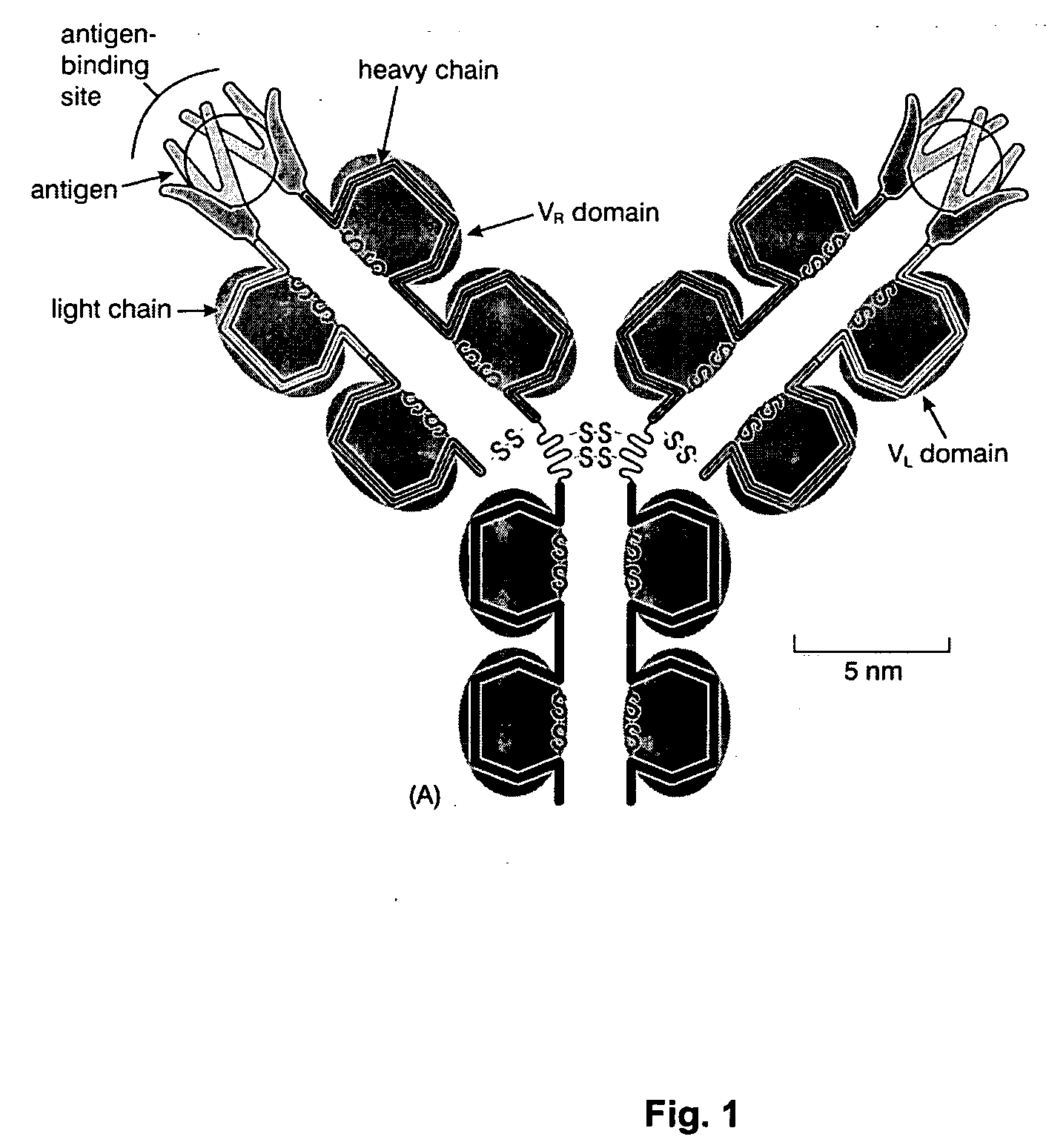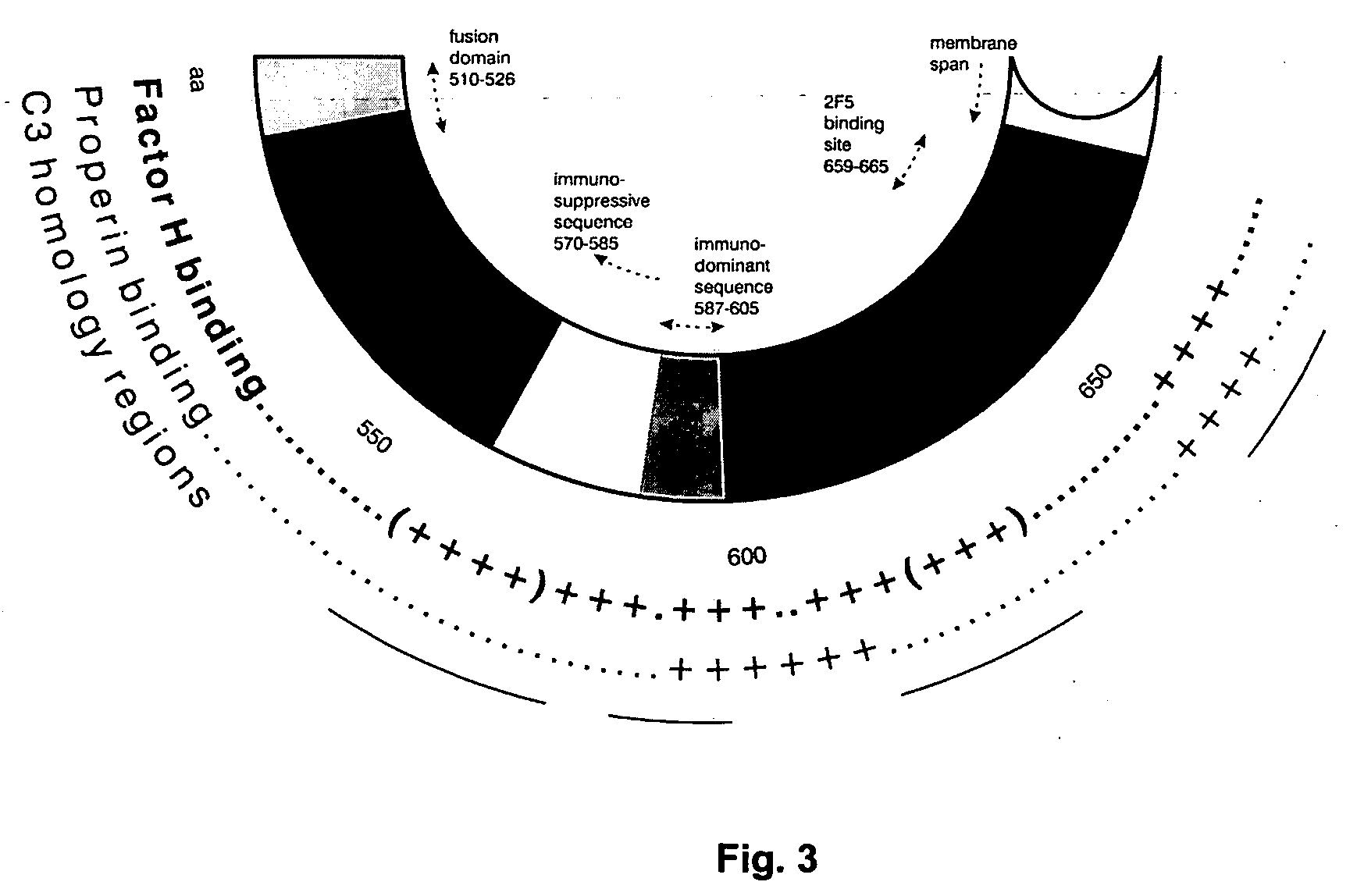Immunogenic composition and method of developing a vaccine based on factor H binding sites
a technology of factor h and composition, applied in the field of immunology, can solve the problems of affecting the development of effective treatment, and individual becoming susceptible to opportunistic infections, so as to reduce the viremia rate, enhance the replication effect, and eliminate the effect of most virus-infected cells
- Summary
- Abstract
- Description
- Claims
- Application Information
AI Technical Summary
Benefits of technology
Problems solved by technology
Method used
Image
Examples
Embodiment Construction
[0086] The following detailed description is not to be taken in a limiting sense, but is made merely for the purpose of illustrating general principles of the invention. In particular, the subunit immunogenic composition described is based on a viral epitope of the gp120 and / or gp41 glycoproteins that will bind with Complement Factor H, FHL-1, and similarly behaving FHR (1-5) (herein referred to generally as Factor H.) Factor H binds to only one site on the gp120 glycoprotein, which can be mapped specifically to the site Env 105-119 (HEDIISLWDQSLKPC). Four sites on the gp41 glycoprotein have been shown to bind to Factor H, including the amino acids 561-585, 587-607, 615-635 and 651-675. The portion of the gp120 glycoprotein that binds to Factor H can be synthesized in vitro using a commercially available amino acid synthesizer. The four areas of gp41 glycoprotein to which Factor H maps have also been sequenced:
[0087] Amino Acids
Amino Acids561-585 (LRAIEAQQHLLQLTVWPIKQLQARI)587-60...
PUM
| Property | Measurement | Unit |
|---|---|---|
| temperatures | aaaaa | aaaaa |
| concentrations | aaaaa | aaaaa |
| concentration | aaaaa | aaaaa |
Abstract
Description
Claims
Application Information
 Login to View More
Login to View More - R&D
- Intellectual Property
- Life Sciences
- Materials
- Tech Scout
- Unparalleled Data Quality
- Higher Quality Content
- 60% Fewer Hallucinations
Browse by: Latest US Patents, China's latest patents, Technical Efficacy Thesaurus, Application Domain, Technology Topic, Popular Technical Reports.
© 2025 PatSnap. All rights reserved.Legal|Privacy policy|Modern Slavery Act Transparency Statement|Sitemap|About US| Contact US: help@patsnap.com



